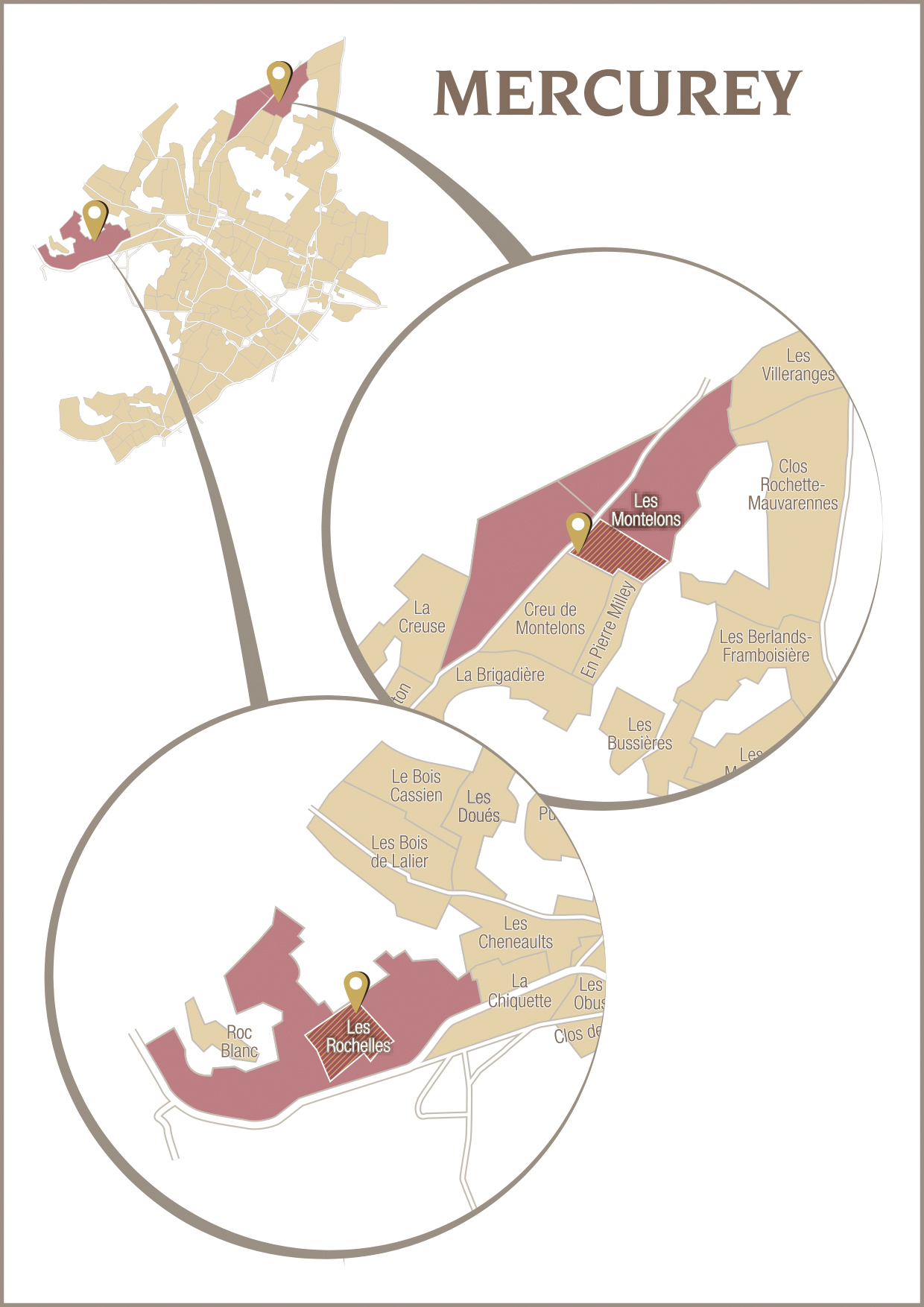MERCUREY 2023
Grape Variety
100% Chardonnay.
Tasting notes
Colour: bright golden yellow.
Nose: aromas of white flowers and notes of white pepper.
Palate: a floral attack with aromas of almond and pear. Beautiful structure and aromatic persistence.
Food and wine pairing
This wine goes well with fish or snails, in cream sauce, white meats in cream sauce, fine cheese.
Serving suggestions
Drink ideally at a temperature of about 12-14°C (54-57°F.).
Ageing potential
Already delicious, this great white Burgundy can age 5 years.
Origin
In 1923, the civil court of Chalon-sur-Saône instituted, by judgment, the appellation d’origine mercurey, allowing it to become one of the three oldest appellations of Burgundy.
In the Côte Chalonnaise, Mercurey has always enjoyed an excellent reputation.
This appellation has 31 climates classified in "premiers crus". Located to the north of the Côte Chalonnaise, more than 90% of the wine produced under the Mercurey name is red. A total of 543 hectares, of which 148 are Premiers Crus. As for the white wines, they represent 106 hectares, including 18 classified as Premiers Crus.
The village of Mercurey owes its name to the Romans who, during the occupation of the region, built a temple in homage to Mercury, God of commerce and finance.
The vineyard estate extends now over 21 hectares and offers 3 upper quality wines from the appellation of Mercurey. White wines: Mercurey (3 ha), red wines: Mercurey (7.50 ha) and Mercurey 1er Cru En Sazenay (1.75 ha).
Terroir
- Vineyard area: 3 Ha (7.41 acres).
- Vines age: around 21 years.
- Soil: Sol clay calcaire.
Vinification and maturing
Pneumatic pressing of the harvest followed by a cold settling between 12 and 24 hours, with the aim of eliminating the coarse bourbes (solid particles from the skin, stalks, skins, impurities that settle by sedimentation).
Alcoholic fermentation in thermo-regulated stainless steel vats for precise temperature control and homogeneity of the cuvée, followed by racking at the end of fermentation. Aging of the wines in 228 litre barrels (20% new barrels) on fine lees for 8 months.
Stirring: twice a month until malolactic fermentation (beginning of January) in order to develop complex aromas and preserve the purity of the fruit, to protect the wine from oxidation (barrel wall and bung hole) but also from reduction (accumulation of deposits, sometimes sulphurous, in the bottom of the barrel or vat), by putting the fine lees back into suspension.
Vintage : 2023
The ideal weather conditions in Burgundy in 2023, characterised by a favourable spring, a hot summer with cool nights, moderate rainfall and an early autumn harvest, played a key role in the high yields and exceptional quality of the grapes at harvest time.
The white wines are distinguished by their elegance, complexity and liveliness. Subtle aromas of white fruit, citrus and floral notes add to their remarkable freshness.
The red wines are powerful and well-balanced, with aromas of red and black fruit, as well as spicy and mineral nuances. The silky tannins add an elegant structure, promising harmonious ageing.
In short, these are expressive, fruity wines with very fine aromatic profiles.


